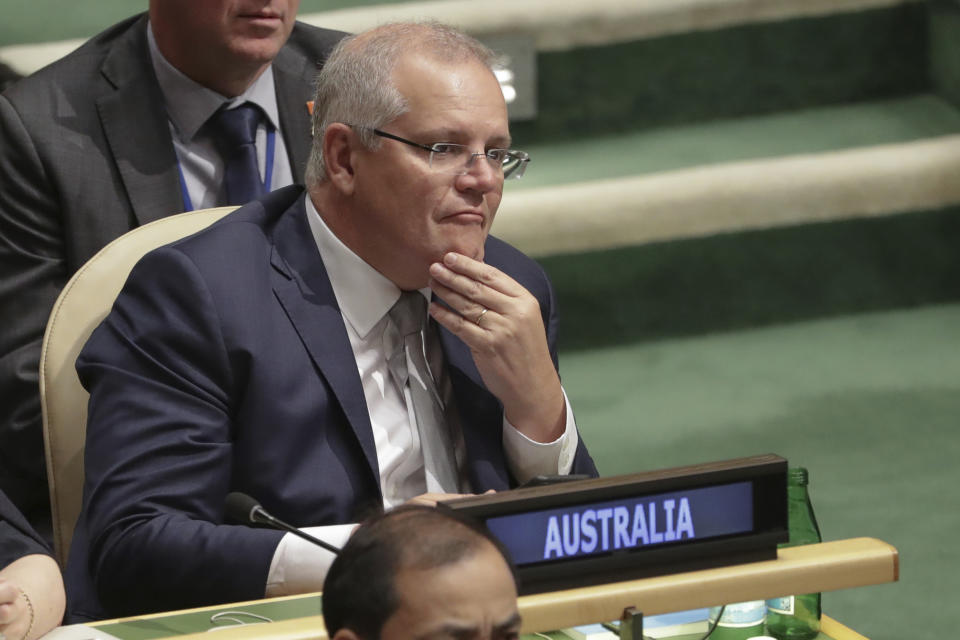‘Utterly desperate’: Why Scott Morrison wants you to ignore government debt

When it comes to government debt, the Morrison government is desperate for you to keep your eyes and ears closes and ignore the facts.
Utterly desperate.
These facts are likely to be defined by Prime Minister Morrison as being ‘in the Canberra bubble’ and therefore not worth talking about, explaining or justifying.
The latest from The Kouk: Why are we so worried about household debt?
More from The Kouk: An open letter to Treasurer Josh Frydenberg
More from The Kouk: Our 'sick economy' and why the RBA and government have let us down
Current state of play
So what is happening with government debt? You know, the government debt that when the Liberal Party was in opposition and Labor were in power was “a disaster”, that was “undermining our kid’s future” and threatened to “ruin the economy”.
When in Opposition, the Liberal Party promised to return to the budget to surplus and to “pay off Labor’s debt”.
It was a promise that created and then reinforced a perception, at least in the mind of some voters, that the Liberal Party is a better economic manager than Labor. This perception has been a critical factor in the Coalition winning the last three elections in 2013, 2016 and most recently in 2019.
Last week, updated data on government debt were released which allowed for an up to the minute assessment of how those promises on debt reduction are going.
In terms of gross government debt, data from the Australian Office of Financial Management shows it reached a record $565 billion as at 11 October 2019. At the time of the September 2013 election, gross government debt was just $273 billion.
This means that in a little over six years, with six budgets and countless policy changes and reforms from the Coalition, gross debt has increased by $292 billion or 107 per cent.
When Mr Morrison is talking about “strong growth” I assumed he wasn’t referring to government debt!
According to Department of Finance data, net government debt reached a record $399 billion at the end of August 2019. At the time of the September 2013 election, when the Coalition was swept to power, net government debt was a paltry $161 billion.
Net government debt has increased by a massive $238 billion or 148 per cent in the six years the Coalition has been in control of spending and taxing policies.
This $238 billion addition to net debt in the six years under the Coalition government compares to the $215 billion rise in net debt under the Labor Party in the six year period from 2007 to 2013 when it was last in office.
Labor’s addition to debt occurred when the world economy was floundering in the deepest recession since the 1930s Great Depression and was driven by both fiscal policy stimulus and a loss of revenue as economic growth slowed.
How has the debt been mounting?
The extraordinary thing about the debt blow out in the last six years under the current Coalition government has been that is has occurred when the global economy has been growing strong and commodity prices have been booming.
The Coalition government is banking on getting the budget to surplus this financial year and in the process, it is hoping to stem the rise in debt.
At the time of the last budget, delivered in April, the 2019-20 budget was forecast to register a surplus of $7 billion.
It is too early to be absolutely sure whether a $7 billion surplus is still on track.
Providing a massive windfall in revenue to the government is the still robust level of commodity prices, particularly iron ore, but this is being offset by the chronic slump in private sector demand which is lowering wages growth and consumer spending.
Data last week from the Department of Finance shows that for the first two months of the financial year (July and August) the underlying budget balance is running $664 million below the assumed run-rate from the budget figuring.
The monthly budget numbers are hugely volatile (for example company tax being paid on the 1st of the month rather than the 31st of the prior month) but if this trend continues, the $7 billion surplus will be under threat and that will spill over to the level of government debt.
Either way, the Coalition has failed in its promise to reduce government debt and this may yet be an issue when the 2022 election rolls around.
Make your money work with Yahoo Finance’s daily newsletter. Sign up here and stay on top of the latest money, news and tech news.

 Yahoo Finance
Yahoo Finance 